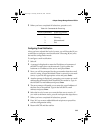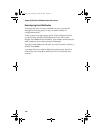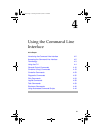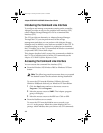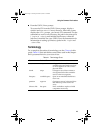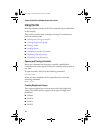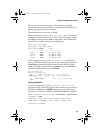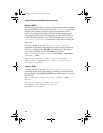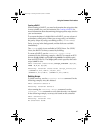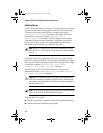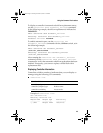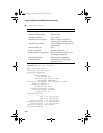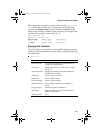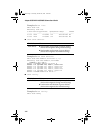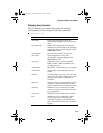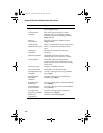
4-7
Using the Command Line Interface
Creating a RAID 5
When creating a RAID 5, you need to determine the stripe size that
is most suitable for your environment. See Creating a RAID 0 for
more information about determining the appropriate stripe size for
your environment.
To recreate the data of a failed disk in a RAID 5, you use a form of
redundancy called parity. When you set up parity, you initialize
the parity stripes by using a scrubbing switch (/scrub=TRUE).
Parity is set up in the background, and the disks are available
immediately.
The /scrub switch is not available in UNIX/Linux. For UNIX/
Linux, the RAID 5 is always created by building.
To create a RAID 5, use the container create raid5
command. In the following example, a RAID 5 is created on SCSI
devices (2,1,0), (2,2,0), and (2,3,0) using 100 M of available space
from each SCSI device. The /stripe_size switch specifies that each
stripe is 64 K in size.
AAC0> container create raid5 /stripe_size=64K ((2,1,0),
100M) (2,2,0) (2,3,0)
Executing: container create raid5 /stripe_size=65,536
((CHANNEL=2,ID=1,LUN=0),104,857,600)
(CHANNEL=2,ID=2,LUN=0) (CHANNEL=2,ID=3,LUN=0)
Deleting Arrays
To delete an array, use the container delete command. In the
following example, array 0 is deleted.
AAC0> container delete 0
Executing: container delete 0
After running the container delete command, use the
container list command to verify that the array was deleted.
In the following example, no arrays are found on the controller.
AAC0> container list
Executing: container list
No containers found.
UG.book Page 7 Saturday, October 26, 2002 12:08 PM



